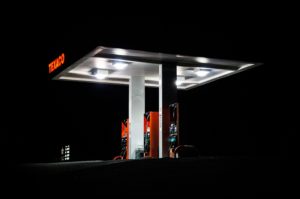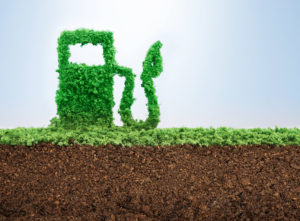When you fuel up at the gas pump, you may have noticed a disclaimer on some nozzles that states fuel “may be made with 10% ethanol”. But few people know what this scientific-sounding additive is. Today, we look at what ethanol is and why it is added to gasoline.
What is Ethanol and Why is it Added to Gasoline?
 Ethanol, also known as bioethanol, is a type of alcohol produced by certain crops. Corn, sugar beets, barley, potatoes, sunflower, grains, wheat, and many other types of crops can all be converted into ethanol.
Ethanol, also known as bioethanol, is a type of alcohol produced by certain crops. Corn, sugar beets, barley, potatoes, sunflower, grains, wheat, and many other types of crops can all be converted into ethanol.
Ethanol is a renewable energy source that can help farms, businesses, and local economies. On top of that, the crops used in producing ethanol help absorb carbon dioxide from the atmosphere. Ethanol burns more cleanly than standard petroleum because of its high oxygen content, further reducing emissions and the carbon footprint produced by this fuel source.
Most gas stations will have E10 and E15 ethanol blends, meaning 90% fuel and 10% ethanol; and 85% fuel and 15% ethanol, respectively.
Fuel manufacturers add ethanol to gasoline not only because it helps reduce costs, ethanol has a high resistance to engine knock. Engine knock refers to the uncontrolled explosions that occur within the engine during normal use. Lower grades of fuel have a lower compression ratio – that is, they explode at a lower pressure than higher grades of fuel.
 That means manufacturers can offer consumers a cleaner-burning, cheaper fuel that doesn’t sacrifice power. However, ethanol does reduce fuel efficiency in cars that are not optimized to run on ethanol. Vehicles that are designed to run on fuel that contains ethanol will have a smaller margin of decreased fuel economy.
That means manufacturers can offer consumers a cleaner-burning, cheaper fuel that doesn’t sacrifice power. However, ethanol does reduce fuel efficiency in cars that are not optimized to run on ethanol. Vehicles that are designed to run on fuel that contains ethanol will have a smaller margin of decreased fuel economy.
Fuel that resists engine knock is convenient for people who own vehicles that require premium gasoline, a type of fuel that resists engine knock, and which is usually more expensive at the pump. In general, higher performance and luxury vehicles will require fuel that is more resistant to engine knock, but that’s not always the case. You can learn more about the difference of fuel grades here.
What is Flex Fuel?
 You may that certain gas stations also feature a standalone pump that, much like diesel, advertises its own selection of fuel. Flex fuel contains up to 85% ethanol and 15% gasoline and can only be run by certain types of vehicles.
You may that certain gas stations also feature a standalone pump that, much like diesel, advertises its own selection of fuel. Flex fuel contains up to 85% ethanol and 15% gasoline and can only be run by certain types of vehicles.
These vehicles are designed to run on both standard gasoline as well as fuel mixes that contain a high proportion of ethanol. Adding flex fuel to a vehicle that is not rated to run this type of fuel will actually cause engine damage or failure.
Much like vehicles that run E10 or E15 – lower ratios of ethanol blend – a flex fuel vehicle sacrifices gas mileage for a lower carbon footprint – up to 7 – 8 miles per gallon.
T3 Atlanta – Your Metro Atlanta Mechanic
Many Toyota, Lexus, Infiniti, and Nissan vehicles run on flex fuel. Whether your vehicle needs routine maintenance or you have a question, give T3 Atlanta a call. With locations in Smyrna and Decatur, we’re the Metro area’s convenient local mechanic. Give us a call! We’re happy to answer any questions you have and help keep your car in great condition for a long lifespan.










Leave a Reply
You must be logged in to post a comment.